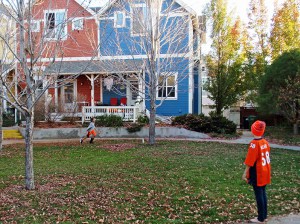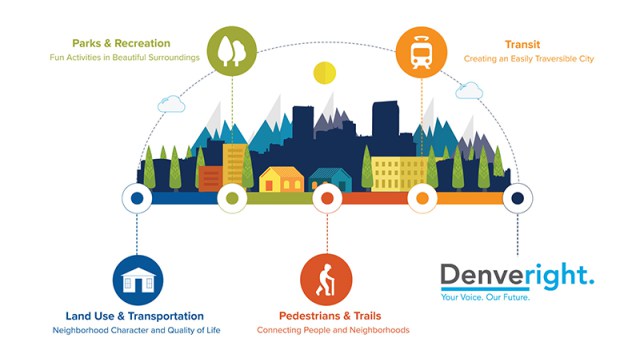<b>Off the beaten path.</b>
We recently asked members of the BuzzFeed Community to share their favourite secret spot in London. Here’s what they said:
1. St James Park
Closest station: St James Park
Budget: Free entry
“There’s this willow tree in St James’s park near Buckingham Palace that has a hidden bench underneath it. It’s so magical to find a hidden and quiet spot right in the middle of central (and very touristy) London.” – cricketb
More information here.
2. Morden Hall Park
Closest station: Morden
Budget: Free entry
Once a deer park, the rural escape in Morden Hall Park is now a haven for nature and wildlife, and will give you a much-needed breath of fresh air. “So lovely, and feels like you’re not even in London anymore.” – Ailbhe Malone
3. Chelsea Physic Garden
Closest station: Sloane Square
Budget: £10 entry
This preeminent centre for botany is peaceful and informative. “It’s worth the trip and the entrance fee!” – Jennifer Domingo on Facebook
4. The Parkland Walk
Closest station: Finsbury Park
Budget: Free entry
“The Parkland Walk runs from Finsbury Park, through Crouch End and up to Highgate. It’s an abandoned railway line that’s become a forest. Look out for the adult sized playground apparatus too!” – lucyk6
5. The Horniman Museum and Gardens, Forest Hill
Closest station: Forest Hill
Budget: Free entry, £3.50 for aquarium access
“Fantastic view across London which rivals that of Greenwich Park.” – ashleyh434f1d695
6. Nunhead Cemetery
Closest station: Nunhead
Budget: Free entry
Don’t miss the “the amazing burnt out church in the center of the cemetery and view of London from the top of the reservoir.” – jodief4756613e2
7. St Ethelburga’s Peace Garden
Closest station: Bank
Budget: Free entry
BuzzFeed Life recommends escaping the City into tranquil secret garden at St Ethelburga’s. With gorgeous flowers and a peaceful environment, the volunteer-tended garden offers a much needed escape from everyday business.
8. Angel Canal
Closest station: Angel Canal
Budget: Free entry
If you’re in the Islington area, escape the hustle and bustle of shops and bars with a stroll along the serene Angel Canal, which offers a unique and lovely view of the city, and hosts a lively annual festival. Recommended by maggiem428f32a00.
9. Richmond Park
Closest station: Richmond
Budget: Free entry
No doubt you’ll find your own little corner of Richmond Park, the largest of London’s Royal Parks. You’ll find plenty of wildlife, seclusion, and peace. Recommended by emilyg47e5692de.
10. Daunt Books
Closest station: Regent’s Park
Budget: Free entry
Curling up with a good book in this Edwardian bookshop on Marylebone Road is the perfect escape from the hustle and bustle of central London. Recommended by heffalump246.
11. St Christopher’s Place
12. B.Y.O.C.
Closest station: Covent Garden
Budget: £25/person for a 2 hour slot
“Hidden under the juice bar in Covent Garden… you bring your own bottle of booze and they turn it into fancy cocktails for you!” – emmac481cc4edc.
13. Flat Iron Steakhouse
Closest station: Piccadilly Circus
Budget: £5/drink, £10/steak
“Flat Iron Steakhouse, get there early and get a bottle of wine with your mates, have a fresh stuffed donut and then make your way to your table for £10 steak at communal tables.” – mollp
14. Opium Parlour
Nearest station: Leicester Square
Budget: £12/drink, £6-£20/plate
“Cocktails and dimsum until 3am, yes please.” – emmac481cc4edc
15. The Cocktail Trading Company
Closest station: Oxford Circus
Budget: £8-£10/drink
“Dive into this basement speakeasy for a private, jazzy atmosphere and incredibly original drinks. Be sure to order a “欢迎到肯塔基州 {WELCOME TO KENTUCKY, HAVE A NICE DAY},” a cocktail disguised a noodle takeaway.” – Chelsey Pippin
16. Mr Fogg’s
Closest station: Green Park
Budget: £5-£10/drink, £38/person for Tipsy Tea
The quirky Victorian-themed cocktail bar was inspired by the hero of Jules Vernes’ classic novel Around The World In Eight Days and offers “Tipsy Tea” every Friday. Recommended by simis3.
17. Espresso Bar Balcony, Tate Modern
Closest station: Southwark
Budget: £1-£5/drink
“The exact spot where I fell in love with London is the balcony at Tate Modern, overlooking the Thames and St. Paul’s Cathedral. Not exactly hidden but it’s simply magical!” – lorenag40d26bd66
Read more: http://www.buzzfeed.com/chelseypippin/17-magical-spots-to-escape-to-in-london





























 Cooper just completed a grueling series of thirty radiation treatments on October 13.
Cooper just completed a grueling series of thirty radiation treatments on October 13.